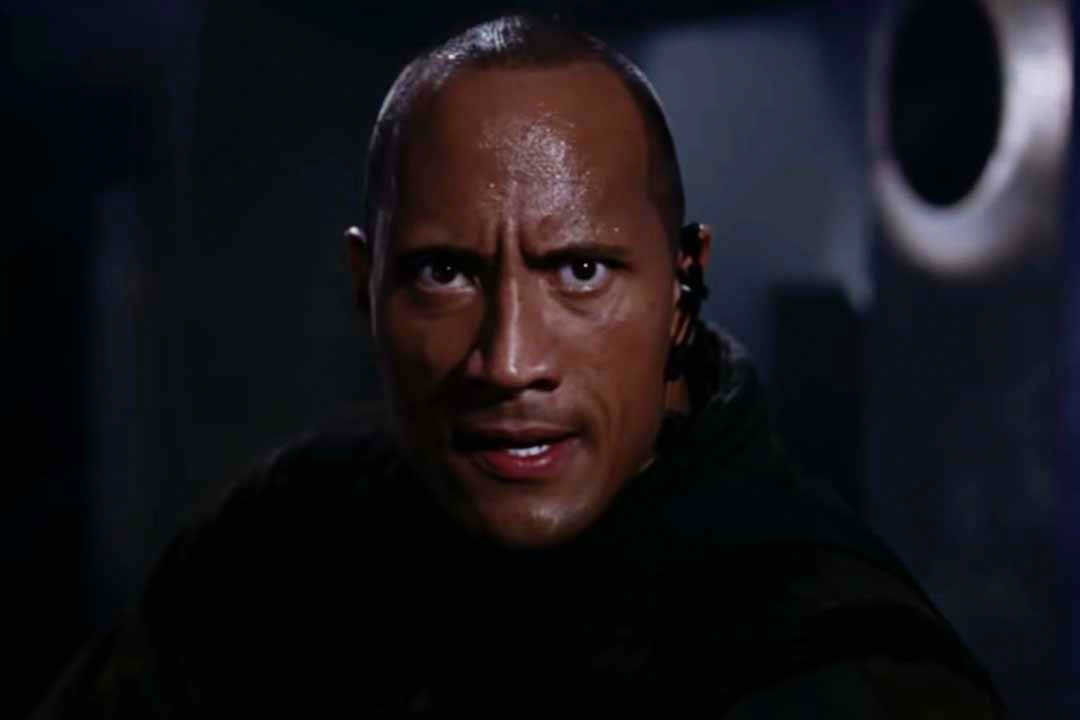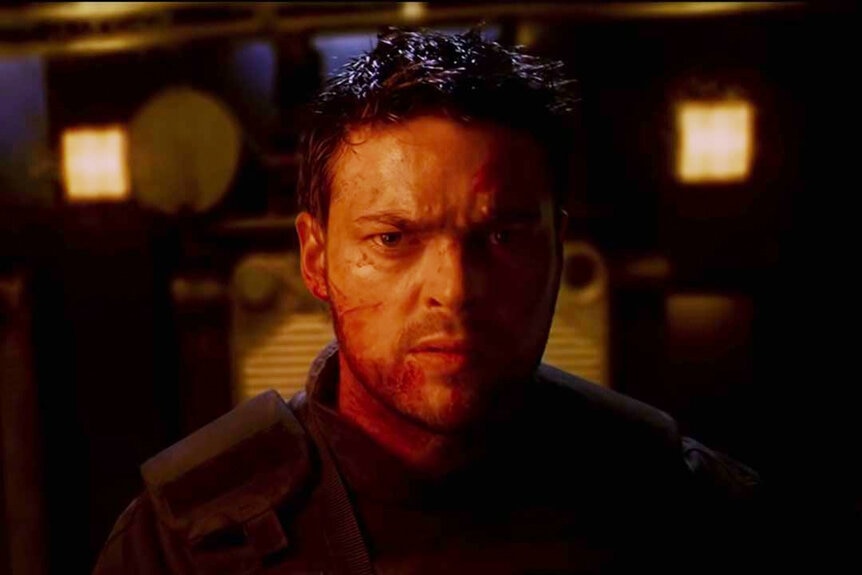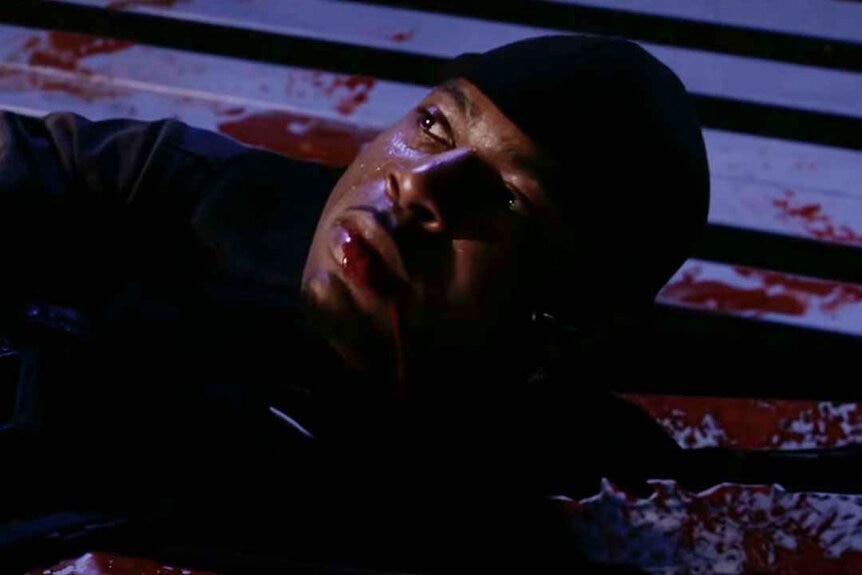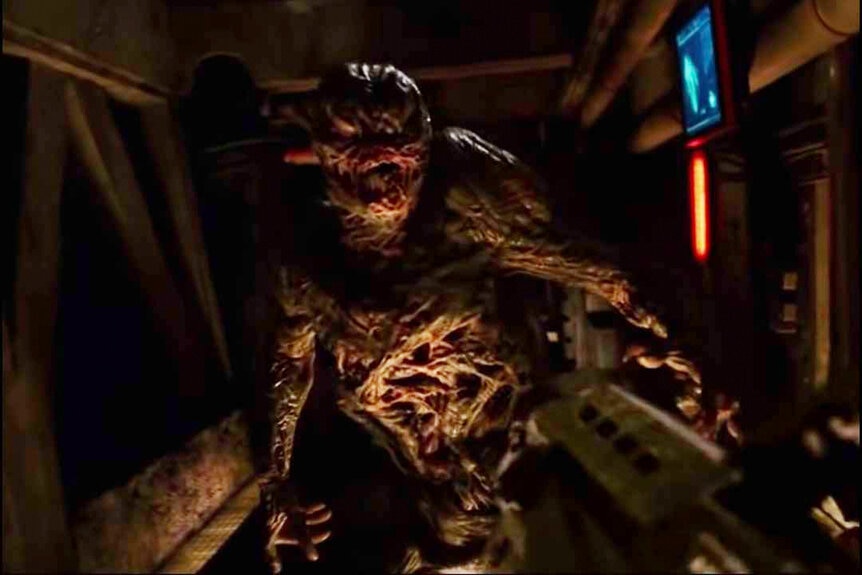Create a free profile to get unlimited access to exclusive videos, sweepstakes, and more!
Hot Take: Doom (The Movie Starring The Rock and Karl Urban) Doesn’t Suck and Never Did
Dwayne “The Rock” Johnson’s Martian tour of duty shoots pretty straight for a flick that bombed at the 2005 box office.

Forever stuck with abysmal approval ratings at Rotten Tomatoes, 2005’s Doom will pretty much always remain cemented in the minds of both critics and viewers as a textbook example of what not to do with a big-screen video game adaptation. Upon its release, the movie’s poor box office and reviewer reception brought a rocky start to Dwayne “The Rock” Johnson’s early foray into leading screen roles, and, despite the smash success of the id Software games that inspired it, the film never quite connected with a core audience.
Rubbish, we say! While no future film archaeologist will ever mistake Doom for one of Denis Villeneuve’s elegant, plot-rich sci-fi tales, the Andrzej Bartkowiak-directed hall crawler isn’t nearly as bad as its 17-year-old reputation suggests — so long as you take it for what it is.
RELATED: Stream The Rock's Doom movie right now on Peacock.
How do we know? Because the effects-heavy sci-fi horror flick recently landed at Peacock, which of course means we naturally wasted no time dialing up the bird app to dive back to the early-2000s past — all to find fresh takeaways from The Rock’s early-career mission to Mars. So chamber your BFG (that’s Big F***in’ Gun for all you newbies), swallow your fear, and form up for a peek at just some of the reasons why we’ll always be in the mood for more Doom — despite what the critics might say.
The Doom Cast: The Rock, Karl Urban
This one’s a no-brainer. Whatever shade you might cast at Doom, it’s tough to turn the stinkeye toward the movie’s killer ensemble cast. Just as he’d recently shown in Walking Tall and The Scorpion King, The Rock was there to fully embrace his chosen role, and he played main antagonist “Sarge” Mahonin with all the suppressed simmer of an actor who knows how to let a villain slowly graduate to final-boss bad-guy status.
None of the actors, in fact, pawned off their roles in a silly sci-fi movie about shooting up mutated freaks in hallways as an excuse to deliver zombie performances. Rosamund Pike (Dr. Samantha "Sam" Grimm) and Karl Urban (John “Reaper” Grimm aka Doomguy, Sam’s brother and the movie’s hero) each do their best with material that, admittedly, gives them no real place to go. Meanwhile, the crew of soldiers who make up the Aliens-inspired gang of ragtag space marines feels distinct enough to individually tell apart — from Richard Brake’s slithery turn as Dean, to Raz Adoti’s ill-fated role as Duke, to Dexter Fletcher’s pitiful plight as Marcus "Pinky" Pinzerowski.
That’s a lot of words for a simple TL;DR takeaway: If Doom isn’t exactly your cup of space tea, it’s hardly the actors’ fault.
The Environments and Effects of Doom
We’ve got a gripe with Doom’s disorienting, same-y environments, but it’s not because they lacked that crucial, corner-turning, claustrophobically convincing fright factor. The movie lavished a ton of creative love on its creature and prosthetic character effects (largely inspired by id Software’s recently-released Doom 3 game), while also crafting spookily messed-up sub-levels, murky corridors, and a shockingly memorable holding cell all into an ideal staging area for Martian mayhem.
All that panic-inducing persuasiveness comes at a cost, though: Doom’s consistently dark, black-and-grey color palette makes it hard for the audience to know where things are happening in relation to each other.
In the linear, first-person Doom games, players are always moving in a single direction, so there’s never much confusion about where our shooter has been (or where he’s headed next). But there’s no such grounding principle in the movie, which pivots only on Sam’s Martian lab and the Pinky-protected main atrium of the Union Aerospace Corporation’s facility back on Earth as waypoints to orient the viewer in an otherwise disorienting pest-control mission that doubles back on itself just a few too many times. But hey — at least none of it looks low-budget or fake.
It Really Did Feel Like Doom
Monsters and guns, some internal team tension that splits the soldiers apart before the creatures get their chance, and some techno-babble about a 24th chromosome with person-to-person mutational effects that can’t be predicted: All that stuff drives Doom’s paper-thin plot, and we can definitely take it or leave it. But one thing the movie adapted to the hilt is the look and feel of the video games themselves.
While Doom took its most direct visual cues from Doom 3 (and swapped any mention of hell for a less supernatural, more science-y backdrop to all the chaos), it still managed to incorporate callouts to the larger game franchise that united to feel organic rather than forced. That fidelity from game to screen hits home in the movie’s late-stage FPS scene, when Reaper (Urban) finally decides to clear a path in a first-person, shoot-‘em-up set piece that does live-action justice to the games’ addictive impulse to always press forward.
The soundtrack helped, too: Scored by composer Clint Mansell to swing between evocative, slow techno vibes and an all-out metal assault, the music matched the tone of the games, while serving up a neat remix of Nine Inch Nails’ “You Know What You Are?” as the pulsating end-credits scroll rolled.
We know, we know: Doom’s "go-here, kill-that" story is pretty weak, the ending is abrupt, and more often than not, it’s hard as hell to tell where all the plot-propelling action is even taking place. The movie waits far too long to spin Urban and Johnson toward their destined hero and antagonist roles, and for all the lava-soaked color that the early Doom games might've teased, the film left viewers mostly stranded inside a cramped and grey-scaled mesh of cold and sterile Martian metal. Worse still, it never quite landed on a memorable catchphrase; that killer one-liner that could’ve delivered The Rock his own Schwarzenegger-worthy breakthrough into the pop culture lexicon of all-time epic movie mic-drops.
None of that really matters, though: At the end of the day, Doom was meant to be nothing more or less than a big, burly, and profitable block of video game-inspired sci-fi action. With nearly two decades of perspective from its 2005 box office crash landing, what really stands out today is just how close Sarge and his BFG blaster actually came to scoring an enviably direct hit.
Doom is now streaming on Peacock.
Originally published Apr 25, 2023.





























